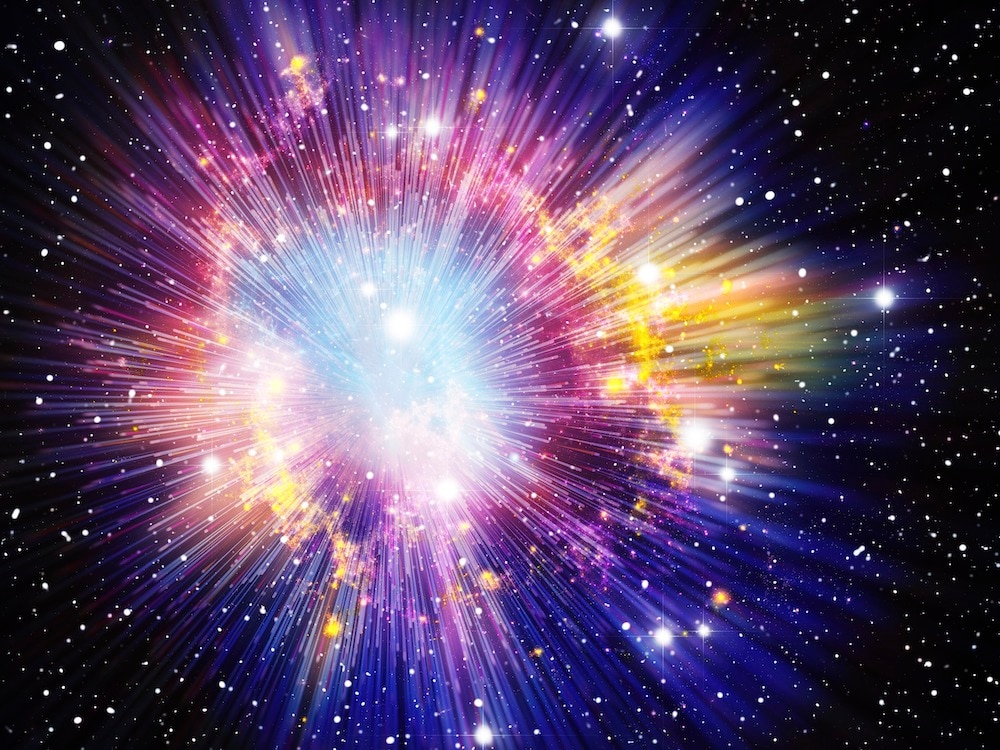Create a free profile to get unlimited access to exclusive videos, sweepstakes, and more!
Supervoid from the Big Bang finally comes out of the dark (energy)
The Eridanus supervoid could reveal some really dark stuff...as in, dark energy.

In the remnants of the Big Bang is a vast expanse of (almost) nothing. There are no galaxies in the void, a realm of cold and infinite darkness. You are plunging into the unknown.
What might sound like a Star Trek intro actually exists in space. Nobody knows why there is a supervoid — a monstrous freezing vacuum — in the cosmic microwave background (CMB), scattered remnants of light from the Big Bang. How the CMB Cold Spot came into being is a mystery. The Eridanus supervoid, which had previously been hypothesized about but never confirmed to exist until now, might have the answer hidden somewhere in its shadows.
It gets darker. Not only might this supervoid be the reason behind the CMB Cold Spot enigma, but dark matter and dark energy might explain why. The problem is that dark matter is undetectable and dark energy often defies understanding. Their existence can only be inferred by their effects. With hardly any galaxies in the Cold Spot, and none in the supervoid or any other voids, there is almost no dark matter. Researcher András Kovács of IAC led a study, recently published in Monthly Notices of the Royal Astronomical Society, on this phenomenon.
“I believe that the nature of the Cold Spot problem hints at its possible solutions,” he told SYFY WIRE. “Supervoids probe the largest cosmic scales where departures from current thinking may emerge. Dark energy suppresses the growth of cosmic structures, and also sets the coldness of the ISW spots on the microwave sky.”
The Eridanus supervoid is the largest known supervoid and also the closest to Earth, but how could it and other, more distant supervoids have possibly caused an anomaly in the CMB? The CMB already has anisotropies, or ways that its properties vary in different directions, which are effects thought to be the result of cosmic structures re-processing CMB light. One of these bizarre effects is the integrated Sachs-Wolfe effect (ISW). It tells us how gravitational potentials have supposedly affected anisotropies in the CMB. These have to do with gravitational fields.
Gargantuan objects generate massive gravitational fields. How far out the gravity of a field can affect the universe depends on how powerful it is. Gravitational potentials refer to how hard an external force would have to work to squelch that gravity, and if that is impossible, the gravitational potential is infinity. Now back to the Sachs-Wolfe effect. If dark energy has had a strong influence in the recent universe, it predicts that CMB photons will heat up in dense regions of the universe and cool down when when they float through less dense regions like a void.
“The details of this measured ISW signal can be used to study the physics of dark energy,” Kovács said. “The Eridanus supervoid is a unique laboratory to learn about dark energy because it is relatively close to us. Our measurements can be pretty direct, and we can study dark energy's stretching effects when we they are expected to be the strongest.”
So the supervoid could reveal what is going on with dark energy from the effects it apparently has on its surroundings. The growth and expansion of the universe were just about balanced, meaning zero ISW, immediately post-Big Bang, when scientists think there was hardly any dark energy. Matter was dominant. Then dark energy started creeping in over time. Growth and expansion ended up getting more and more out of whack, so there will be an ISW signal in any given part of the universe. Now, dark energy is believed to be dominant. Way dominant.
Supervoids leave imprints on cold spots, not just because of expansion or fluctuations in density and gravity, but because they evolve slightly out of balance with those cold spots. Blame dark energy again. Gravitational potentials are thought to decay if there is extra dark energy around, and this decay may lower temperatures in photons that travel through supervoids. Photons lose energy when they enter supervoid territory, so they also lose heat, but not as much on the way out than in. Dark energy makes voids shallower at one end as it infinitely stretches the universe.
“By studying the total loss of energy in detail, cosmologists can infer the properties of dark energy,” said Kovács. “Supervoids could lead to a different dark energy model and, therefore, possibly colder spots aligned with them.”


























